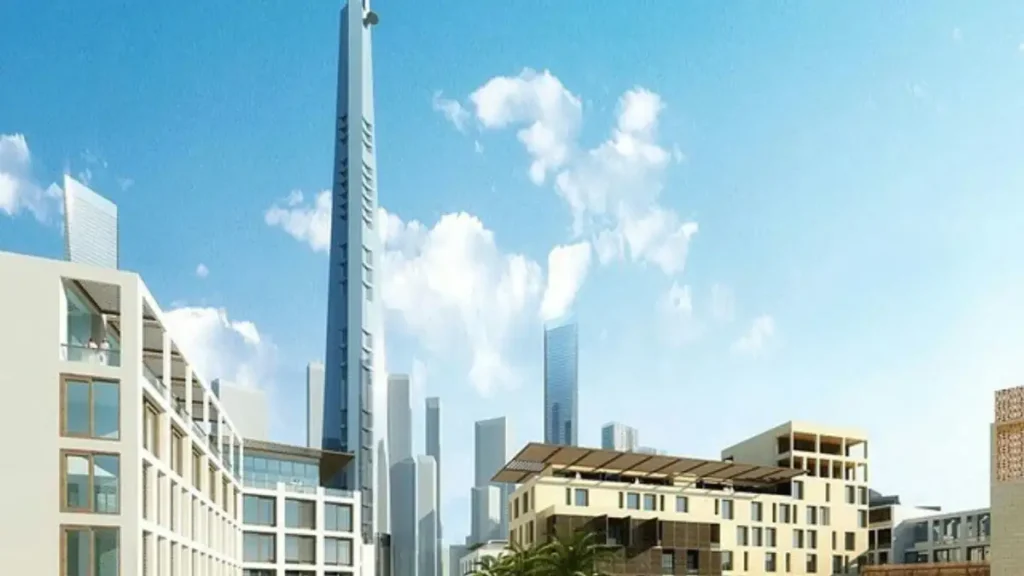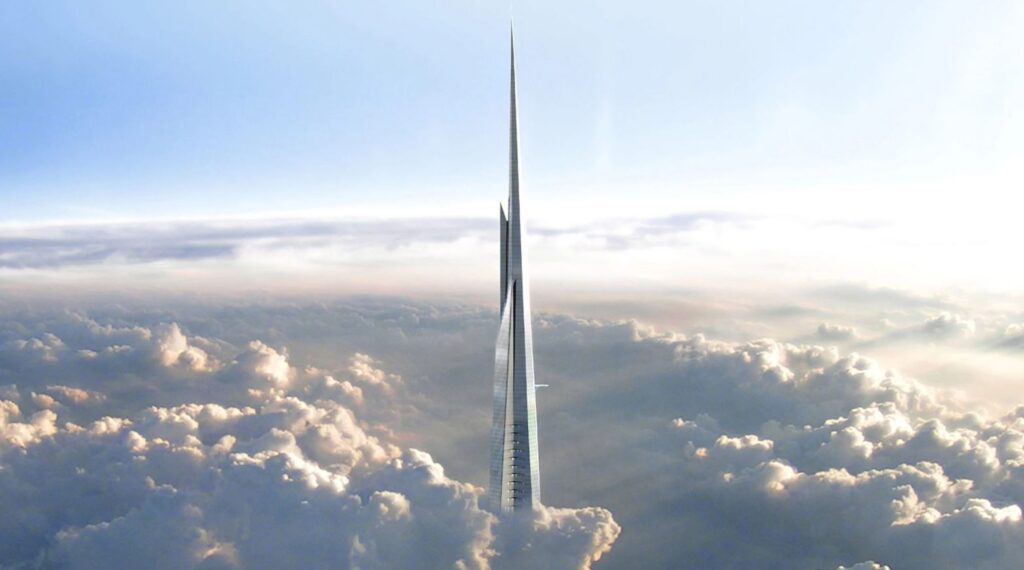In a monumental stride towards architectural supremacy, Saudi Arabia has reignited the construction of the Jeddah Tower, poised to eclipse Dubai’s Burj Khalifa as the world’s tallest building. This ambitious project, formerly known as the Kingdom Tower, is set to redefine urban skylines and exemplify the Kingdom’s commitment to visionary development.
A Visionary Project Resumes : Jeddah Tower
The Jeddah Tower project, initially launched in 2013, experienced several delays due to financial challenges and the global pandemic. After a five-year hiatus, construction recommenced in January 2025, with an anticipated completion between 2028 and 2029. Upon completion, the tower will soar over 1,000 meters (3,281 feet), surpassing the Burj Khalifa by approximately 180 meters (591 feet).

Architectural Marvel
Designed by renowned American architect Adrian Smith, who also conceptualized the Burj Khalifa, the Jeddah Tower incorporates unique structural and aesthetic features tailored to its unprecedented height. The sleek, streamlined form is engineered to withstand Jeddah’s coastal climate while minimizing wind load effects. The tower will house a mix of residential units, office spaces, a luxury hotel, and the world’s highest observation deck, offering panoramic views of the Red Sea and beyond.

Economic and Cultural Significance
Serving as the centerpiece of the Jeddah Economic City project, the Jeddah Tower symbolizes Saudi Arabia’s economic diversification efforts under the Vision 2030 plan. This development aims to transform Jeddah into a global hub for business, tourism, and culture, attracting investments and creating job opportunities. The tower’s completion is expected to bolster the city’s international profile and stimulate growth in various sectors.
Engineering Feats and Challenges
Constructing a building of this magnitude presents unparalleled engineering challenges. The foundation extends deep into the ground to support the colossal structure, and advanced materials are utilized to ensure stability and safety. Innovative construction techniques, including high-strength concrete and state-of-the-art damping systems, are employed to address potential seismic and wind-related concerns. The project’s resumption has galvanized a global team of experts dedicated to realizing this architectural milestone.
Global Implications
The Jeddah Tower’s ascent signifies a broader trend in the Middle East, where nations are investing in iconic infrastructures to assert their presence on the world stage. This architectural race not only showcases engineering prowess but also reflects the region’s aspirations for economic diversification and modernization. As the tower rises, it stands as a testament to human ambition and the relentless pursuit of pushing the boundaries of what’s possible.
Conclusion
The revival of the Jeddah Tower project marks a significant chapter in architectural history, poised to redefine global skylines and set new benchmarks in skyscraper engineering. As construction progresses, the world watches in anticipation, eager to witness the realization of this towering vision that embodies the spirit of innovation and progress in Saudi Arabia and beyond.
Also see: Dubai Opera’s 2025 Season: A Cultural Extravaganza













